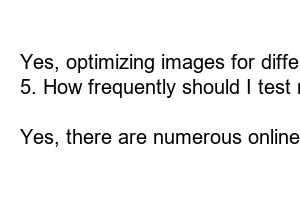사진 용량 줄이는 법
Title: How to Reduce Photo Size and Optimize Your Images for Better Performance
Introduction:
In today’s digital age, where high-quality images are a crucial part of our online experience, it’s essential to master the art of reducing photo size without sacrificing quality. Large image files slow down your website, consume valuable storage space, and negatively impact the user experience. But fret not! In this post, we will guide you through simple yet effective methods to reduce photo size while preserving their visual appeal.
Subheadings:
1. Why reducing photo size is important
In the era of lightning-fast internet connections, web users expect websites to load instantly. Large photo files can significantly increase the loading time, leading to frustration and a potential loss of visitors.
2. Choosing the right image file format
Different file formats serve various purposes, and each has its optimal use. By understanding the differences between JPEG, PNG, and WebP formats, you can make an informed choice to reduce photo size while maintaining image quality.
3. Resizing images proportionally
Having giant images that overpower your webpage is not only visually unappealing but also detrimental to website performance. Learn how to resize images proportionally using simple tools to fit your desired dimensions without distorting the content.
4. Compressing images without quality loss
Image compression is the process of reducing the file size while maintaining optimal visual quality. We will explore the importance of striking the right balance between compression and maintaining image details.
5. Utilizing online photo size reduction tools
Discover easy-to-use online tools that can significantly reduce the size of your images with just a few clicks. These tools often offer various optimization features such as resizing, compressing, and converting, making them ideal for web developers and content creators.
6. Optimizing images for the web
Beyond reducing photo size, optimizing your images for web use can further enhance website performance. Learn about techniques like lazy loading, responsive images, and utilizing content delivery networks (CDNs) to ensure your images load seamlessly across different devices.
7. Testing and monitoring image performance
Once you have implemented photo size reduction techniques, it’s crucial to continuously monitor and analyze your website’s image performance. Regularly test your website’s loading speed and use tools like Google PageSpeed Insights to identify areas for improvement.
Summary:
Reducing photo size is vital for maintaining a fast-loading, visually pleasing website. By understanding the importance of image optimization, choosing the right file format, resizing proportionally, compressing effectively, utilizing online tools, optimizing for the web, and testing performance, you can effortlessly reduce photo size without compromising visual appeal. Implement these techniques today and enhance your website experience for visitors, improving overall performance and user satisfaction.
FAQs:
1. Does reducing photo size affect image quality?
Reducing photo size can affect image quality if not done properly. However, by using appropriate techniques and tools, you can minimize any loss in quality while significantly reducing photo size.
2. Can’t I just resize the image manually in image editing software?
While resizing an image manually can reduce its dimensions, it may not optimize the file size effectively. Utilizing specialized photo size reduction tools and techniques ensures better compression and maintains high image quality.
3. What is the best file format for reducing photo size?
JPEG is generally the preferred file format for reducing photo size. It offers good compression rates while maintaining satisfactory image quality. PNG is ideal for illustrations and transparent images, while WebP is a more modern format that combines compression efficiency with broader browser support.
4. Is it necessary to optimize images for different devices separately?
Yes, optimizing images for different devices is crucial for providing the best user experience. Techniques like responsive images and lazy loading help ensure images load appropriately on various screen sizes and internet connection speeds.
5. How frequently should I test my website’s image performance?
Regular testing is recommended to monitor your website’s image performance. Conduct tests whenever you make changes to your website or add new images. Regular analyses will help identify potential bottlenecks and ensure continued optimal performance.
6. Are there any online tools that I can use for free?
Yes, there are numerous online tools available for free that can help reduce photo size. Some popular ones include TinyPNG, Compressor.io, and Squoosh. Explore these tools and find the one that best suits your needs.

